Let’s get ready to explore the list of vegetables that start with F. You will be fascinated by how diverse they are.
In this comprehensive guide, I will unveil the names, origins, characteristics, flavors, and some nutritional facts of these amazing vegetables.
From famous veggies to lesser-known names, these foods beginning with F will surely expand your culinary palette and enrich your nutritional intake. On the other hand, you’ll find some amazing fruits with an F name at the end of this article.
But first, let’s find out 16 options of veggies beginning with the letter F.
16 Vegetables That Start with F with Filters
Discover an array of 16 vegetables starting with “F,” ranked by popularity. Plus, with the advanced filter, you can easily identify unique options, those dual-classified as both fruits and vegetables, and perfect additions for dishes, beverages, or simply to enhance your dish’s visual appeal.
Fennel
- Exotic
- For Dishes
Fennel is one of the most ancient plants that originated from Europe and Asia. They have white bulbs and green stalks. And every part of them, such as bulb, stalk, leaves, and seeds, is edible.
Fennel is an aromatic and flavorful herb with culinary uses. It has an anise-like and slightly sweet flavor with a crunchy texture.
You can eat fennel bulbs raw by making salads, or sauté and roast them with some peppers, olive oil, and salt. For the fronds, you can add them to soups, salads, and pasta. Overall, fennel is a popular vegetable in Mediterranean cuisine.
Fennels have a lot of nutrients and are high in fiber, vitamin C, and calcium. Another fascinating fact about fennels is they are low in calories, which is an ideal option if you want to lose weight.
Fiddlehead Fern
- Exotic
- For Dishes
Fiddlehead ferns are the furled fronds of a young fern, harvested for use as a vegetable. They were first grown in Canada and Maine.
Fiddlehead ferns are named for their resemblance to the ornamental ends of a fiddle. They have a grassy, slightly nutty flavor and crispy texture, often likened to a cross between asparagus and young spinach.
However, you must not eat them raw because they contain natural toxins (like shikimic acid). For safe consumption, you should boil them for at least 10 minutes or steam them for 20 minutes. After boiling or steaming, they can be sautéed, pickled, or used in various recipes.
Fiddlehead ferns have a good nutritious profile. They have an excellent amount of omega-3 fatty acids and antioxidants.
Fava Bean
- For Dishes
Fava beans (also known as broad beans) are known to originate from some regions of Asia. They come in flattened shapes and are encased in large, inedible pods, often requiring double shelling before consumption.
They have a creamy, nutty, sweet, and slightly bitter flavor. What is unique about fava beans is that they taste a little bit like cheese.
There are a lot of ways that you can use fava beans for your meals. You can make fava bean salads or use them to make delicious stews. It’s also possible to ground fava beans to make flour.
Favas are highly nutritious, providing a good source of protein, fiber, vitamins A, B, and C, as well as minerals.
Fenugreek
- Exotic
- For Dishes
Originating from India and northern Africa, fenugreek is an herb with small, rectangular, yellowish seeds. They are frequently used in the cuisines of the Indian subcontinent.
Fenugreek has a nutty and slightly bitter flavor. Its taste resembles that of syrup and burnt sugar. Fenugreek is often used in spice blends and as a flavoring agent in foods and beverages.
It contains great fiber, protein, and mineral contents, which can lower your cholesterol and blood sugar levels.
Flat Bean
- For Dishes
Flat beans (aka helda beans) are a variety of green beans that are recognized by their long and flattened shapes. They were first grown in Italy. Today, this bean variant is the primary ingredient of Indian cuisine.
Flat beans have a tender texture and a slightly sweet, very fresh flavor. However, they cannot be eaten raw. You should steam, sauté, and braise them to make various dishes.
Flat beans are high in fiber. They are extremely low in calories, which makes them a perfect ingredient for healthy and balanced dishes.
French Bean
- For Dishes
French beans, often known as green beans or haricot verts, are not from France as their name suggests. Actually, they come from the United States.
They are green in color, long and thin in shape, and earthy and sweet flavor. Compared to common green bean varieties, French beans are thinner and more tender.
French beans can be cooked in various ways. You can fry, boil, and steam them. Adding them to salads, soups, and stews is another way to enjoy French beans.
Fat Hen
- Exotic
- For Dishes
Fat hen is a wild green native to Europe. The leaves, shoots, and seeds of fat hen are all edible.
The seeds are used to add to the flour of cake bread, muffins, and pancakes. The leaves are often added to salads, stir-fries, pesto, and sauces.
They have a matt green color and a small diamond shape of the leaves, which have a slightly salty and earthy taste, somewhat similar to spinach or chard.
Fat hens are packed with vitamins, protein, potassium, and calcium.
Frisee
- For Dishes
- For Garnish
Frisee is a type of chicory, often recognized by its frilly, pale green leaves and slightly bitter taste.
It’s a common ingredient in salads. Frisee provides a crunchy bite. It pairs well with sweet and nutty flavors, which can help balance its natural bitterness.
This vegetable is a good source of fiber, vitamins, and minerals.
Flax Microgreens
- For Dishes
- For Garnish
Flax microgreens are the young seedlings of the flax plant, harvested just after they’ve sprouted. These tiny greens are packed with nutrients and have a subtle, slightly spicy flavor.
Flax microgreens can be a nutritious addition to salads, sandwiches, and smoothies. Growing them is relatively easy, so you can try them at home.
They are rich in omega-3 fatty acids, fiber, and antioxidants.
Field Cucumber
- Fruit Vegetables
Field cucumbers are the common cucumbers grown in open fields, as opposed to those cultivated in greenhouses.
Originating from the United States, they are often called slicers. Field cucumbers are shorter and fatter than common cucumbers. Their skins are thicker and darker in color.
Field cucumbers taste fresh. You can eat them raw or cut them into slices and add them to various recipes, such as salads, pizzas, noodles, etc.
Field Pennycress
- Exotic
- For Dishes
Field pennycress, also known as stinkweed or French weed, is a wild plant that is part of the mustard family. It’s often found in fields and along roadsides.
The leaves and seeds of field pennycress are edible. The leaves have a sharp, peppery flavor, similar to arugula or mustard greens.
They are ideal for making salads or as a cooked green. The seeds can be used as a spice or for oil production.
Flat Cabbage
- For Dishes
Hailing from Taiwan, flat cabbage is a type of green cabbage with a sweet and mild flavor, making it versatile for both raw and cooked applications, from salads to stir-fries.
They have a slightly flattened round shape. The outer leaves are bright green, and the inner ones are white.
The leaves are thin and crunchy, making them pretty fragile. When cooking them, you should carefully adjust the time and temperature to keep the texture still.
They are rich in vitamin C and antioxidants.
French Sorrel
- For Dishes
- For Garnish
French sorrel is a perennial herb with a tangy, lemony flavor. The leaves are arrow-shaped and bright green.
French sorrel adds vibrant color and tangy notes to salads, soups, and sauces. Also, this herb is particularly popular in French cuisine and is known for its compatibility with fish and egg dishes.
Apart from its culinary uses, French sorrel is also valued for its health benefits, including high vitamin C content.
Fluted Pumpkin
- Exotic
- For Dishes
Fluted pumpkin, commonly referred to as Ugu, is a tropical vine grown primarily for its edible leaves and seeds.
It’s native to West Africa and is a vital ingredient in many regional dishes. They have a sweet, nutty flavor and are commonly used in soups, stews, or as a leafy green in various dishes.
The seeds, which are high in protein and fat, can be eaten as a snack or used to extract vegetable oil.
French Purslane
- For Beverages
- For Dishes
French purslane, aka golden purslane, is known for its succulent, golden-green leaves and a slightly sour, salty taste.
This hardy plant is ideal for making salads, soups, and sandwiches. Its crunchy texture and vibrant flavor make it a refreshing addition to summer meals.
French purslane is a rich source of omega-3 fatty acids, vitamins (especially A, C, and E), and minerals.
Feher Ozon Peppers
- Exotic
- Fruit Vegetables
Feher ozon peppers are a Hungarian variety with a sweet flavor and bright, creamy-white color. When they mature, the pepper will turn to a vibrant red.
These peppers are typically elongated and have a crunchy texture. They are perfect for fresh eating, roasting, or pickling.
Feher ozon peppers are not only delicious but also a good source of vitamins A and C.
What Are Popular F-Fruits?
Below are three common names in the world of F fruits.
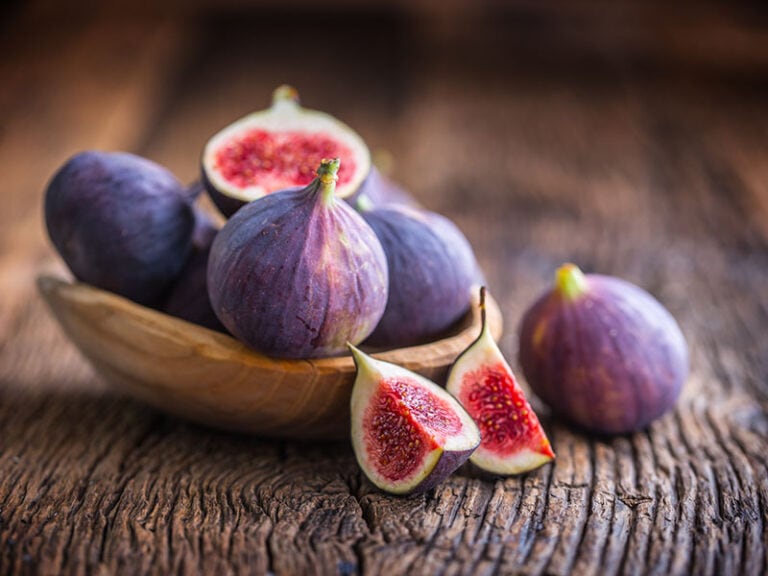
Fig
Figs are sweet fruits with a unique, slightly chewy texture, filled with tiny seeds. They’re rich in fiber and minerals.
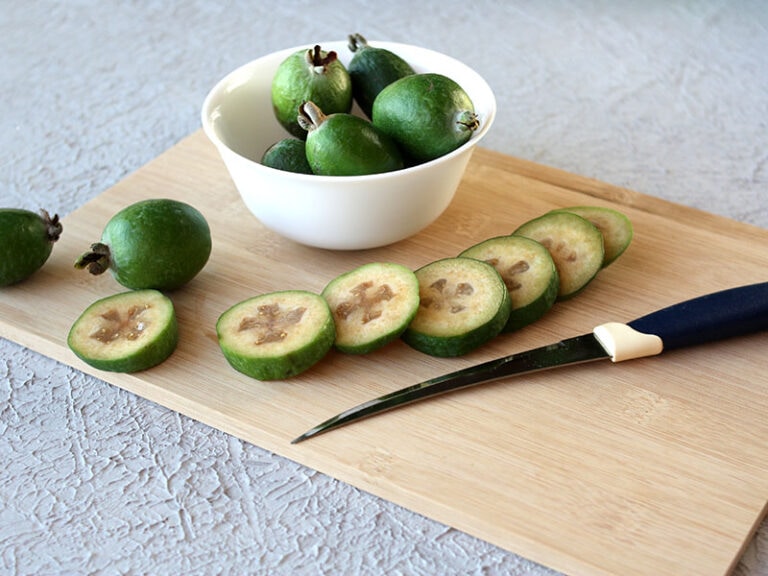
Feijoa
Also known as pineapple guava, feijoa offers a sweet, aromatic flavor, reminiscent of pineapple, apple, and mint.
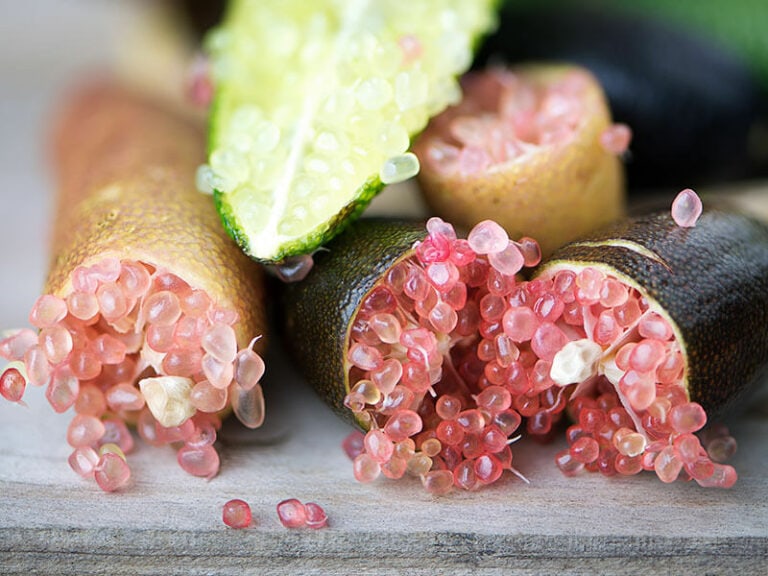
Finger Lime
Nicknamed ‘citrus caviar’, finger lime contains caviar-like pearls, offering a tangy and slightly bitter flavor.
Looking for a deeper dive into the vegetable kingdom? Check out my extensive list of F-named fruits for more interesting finds.
Are there any other vegetables starting with F that you’re familiar with? Feel free to drop your knowledge in the comments section! And if you’ve tried them, I’d love to hear about your experiences!
Don’t stop your vegetable voyage here; continue exploring our colorful articles on vegetables from A to Z to expand your culinary horizons even further!

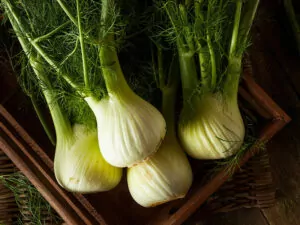
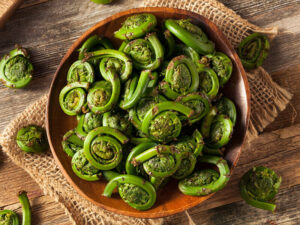
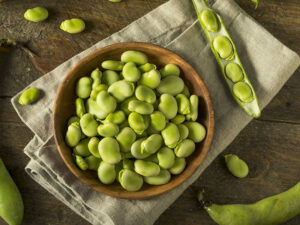
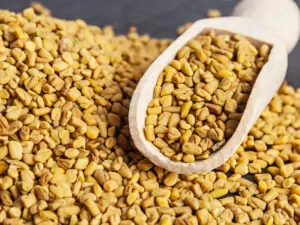
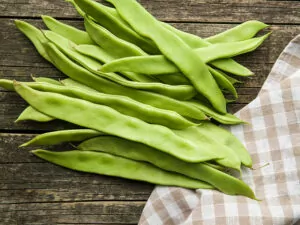
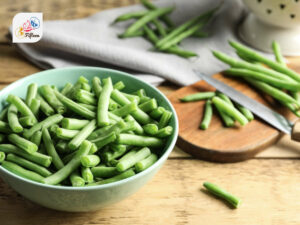
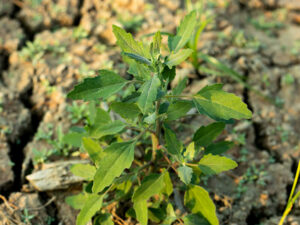
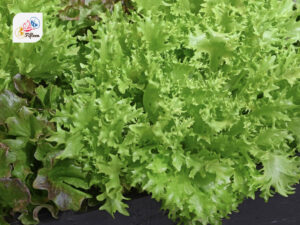
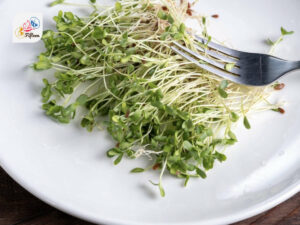
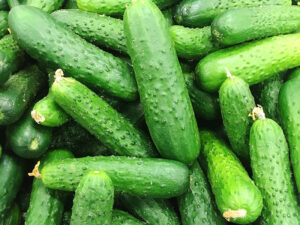
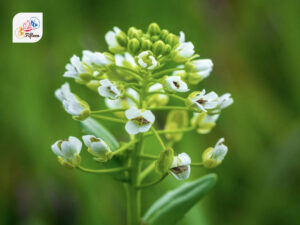
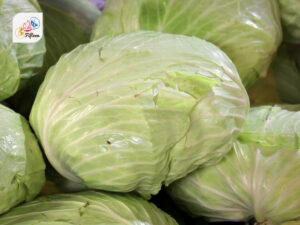
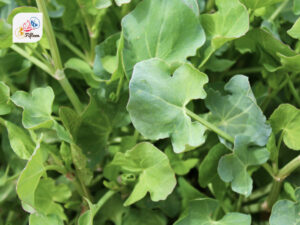
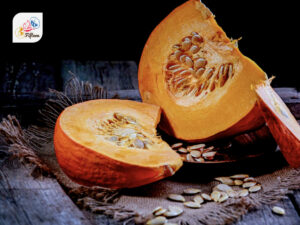
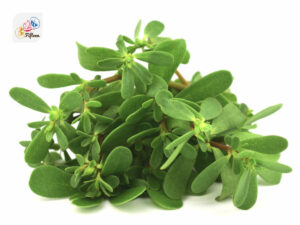
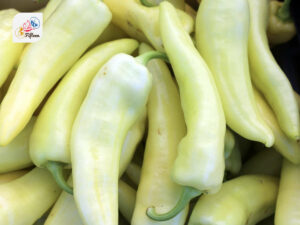
Jamie Scott
Editor in Chief, Senior Content Writer
Expertise
Home Cooking, Meal Planning, Recipe Development, Baking and Pastry, Food Editor, Cooking-video Maker, Western Food Evaluation Expert
Education
Le Cordon Bleu College of Culinary Arts
Local Community College, New York, NY
Jamie Scott is a skilled culinary expert and content creator specializing in Western cuisine. With over 15 years in the culinary field and formal training from Le Cordon Bleu, Paris, Jamie deeply understands how to blend nutrition with delicious flavors. His passion for cooking matches his commitment to making healthy eating accessible and enjoyable.
On Fifteen.net, Jamie brings a fresh perspective to classic dishes and beverages, offering readers insightful recipes, cooking tips, and a fresh view on meal planning that emphasizes taste, health, and simplicity.